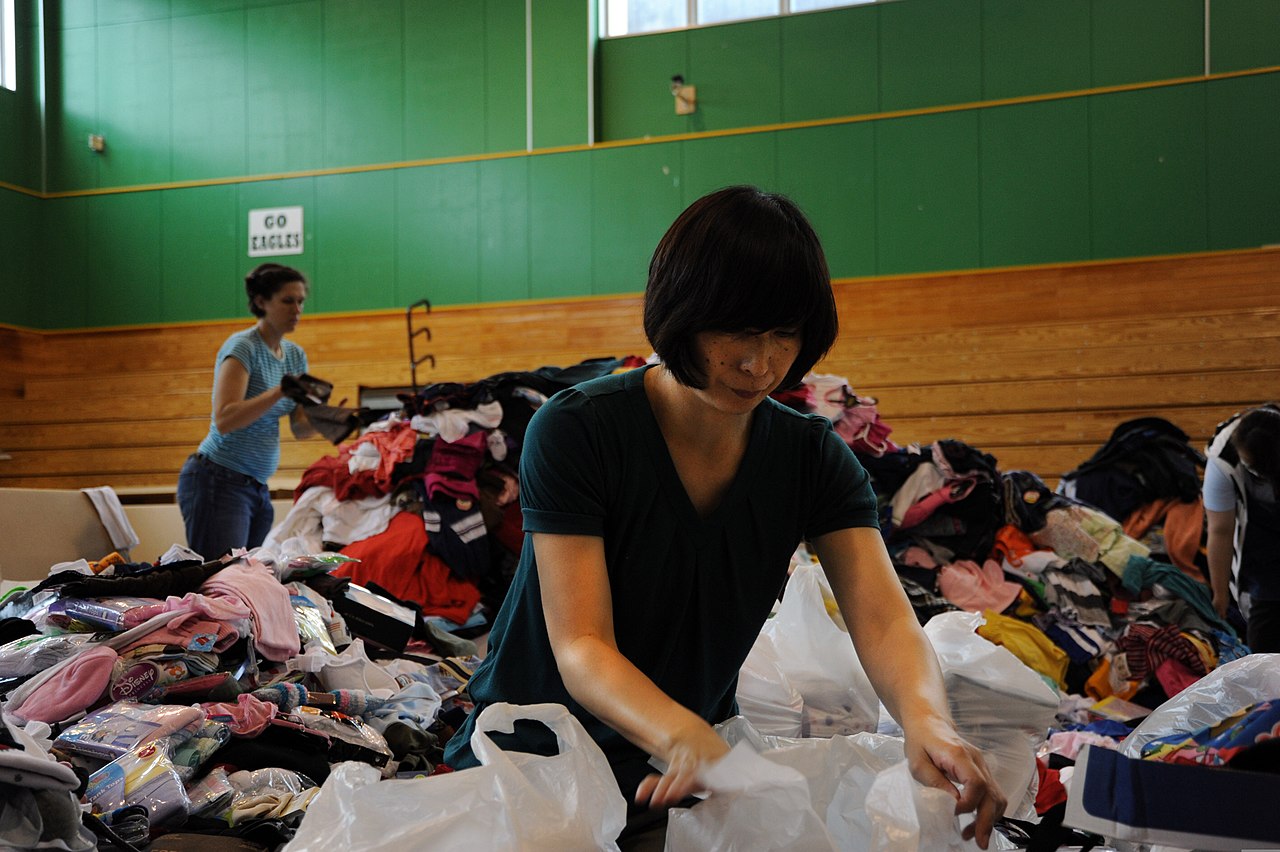The Journey of Donated Clothes: What Really Happens After You Donate?
By Paul Krantz
In recent years, fashion consumers have become more aware about some of the problems involved with the textile industry. Such as the fact that in 2020, textile consumption in the EU was the 3rd highest source of water and land use and the 5th highest source of greenhouse gas emissions, according to the European Environment Agency.
So fast-fashion giants have created big campaigns to market their clothes as more sustainable, more equitable, or both. Such as H&M’s Conscious Choice clothing line, which was rebranded after the company was sued in both Norway and the Netherlands for misleading claims.
On the consumer side, there is the widespread belief that donating used clothing can help to reduce one’s impact. Indeed, when used clothes are given directly to someone who will continue to wear them, that can save significant resources as it reduces one’s need to buy new items. Unfortunately, that is pretty far from the reality of what happens when one drops a handful of clothes in most of the available donation bins.
A massive industry build around second hand trade
An investigation by Neue Zürcher Zeitung (NZZ) looked into what happened to the clothes dropped in donation bins in Switzerland or nearby regions in Europe. They tracked clothes donated in Zurich to sorting facilities in Eastern Europe, with the majority of items being sent on to larger sorting operations in Africa or Asia.
Per reporting by NZZ, TEXAID, which manages the collection and sorting of used clothes across Switzerland, collects 30 tons of material every day from the city of Zurich alone, and 32,000 tons across Switzerland annually, “an amount which could fill 30 Olympic swimming pools.”
Tracking the used textile journey
Used clothes are mostly sorted in countries like Hungary or Bulgaria—where labor is cheaper—into first, second and third tier quality items. Top quality items are resold in second-hand stores like Germany’s ReSales, and the rest are shipped to intensive sorting facilities in places like India, where the labor costs for sorting mountains of clothes is significantly cheaper.
Interestingly, to protect local trade, India and other countries prohibit the direct sale of imported second-hand items. So most of the resellable items found among the piles here are sent forward to other countries, or even back to Europe—amounting to a hefty carbon cost for some second-hand “vintage” goods.
Large portions of donated clothes that are ultimately found to be unusable end up in massive landfills, such as those in Ghana or Chile’s Atacama Desert.
Furthermore, at least a small portion of donated textiles are incinerated, adding just a bit more to the already significant carbon footprint of the industry.

‘Donated’ clothes don’t go directly to people in need
In the case of TEXAID, as well as most other large second-hand clothing traders, not a single item collected is actually donated directly to people in need.
It’s an outdated idea, although one that still persists among many consumers today, that by donating a pair of jeans, a wealthy consumer is able to clothe a less fortunate individual on the other side of the world. The reality is much more complicated.
There are positive outcomes for at least a portion of the world’s donated textiles—such as providing cloth for local upcycling businesses, or even raw material that can be processed to make eco-insulation, for example.
But overall, consumers should be aware that donated items are not simply given to those in need. Furthermore, second-hand trade comes with its own impacts on the environment and economic inequality, and they are significant.
Whereas NGOs like the Red Cross originally initiated small, local drives to collect and redistribute lightly worn clothes, that model is no longer tenable with today’s massive fashion industry and globalized supply chains. Instead, some aid organizations have hung on as partial shareholders in private second-hand collection businesses and others have gotten out of the industry altogether.
In short, second-hand clothing collection has grown from its nonprofit origins to become a global trade dominated by private firms with significant impacts on the environment and local economies around the world.

What is authentically ethical consumerism?
Part of the reason driving this transformation has been that the quality of clothing overall has declined. Today’s main fashion brands pump out products made of cheap synthetic materials that wear down quickly. Even after just a year or two of wear, many products are no longer fit for resale.
Given the low quality of second hand clothes, and the availability of cheap new products, the second clothing market is losing value quickly. Today most second hand textile collectors are private companies that are effectively offering free disposal services by extracting value from textile waste. But very soon it could be that these companies will charge for their disposal services.
On the individual level, donating used items while actively purchasing goods from fast fashion brands doesn’t make sense. At least not if one’s goal is reducing negative social and environmental impacts. In fact, by feeding material to the second hand supply chain, one is actually adding to the carbon emissions and labor involved in the shipping, sorting and disposing of textile waste.
A much more efficient means of reducing one’s negative impacts in this regard is simply consuming less. This minimizes one’s financial participation in the fast fashion industry, and decreases resource and energy consumption overall.
Rather than buying new cheap clothing items each year, investing in quality clothes that will last for many years is a much more sustainable practice. Furthermore, these more durable clothes can often be made to last even longer by patching or repairing them when small tears or damages occur.
As for getting rid of items, giving them directly to friends, family or those who will continue to use them is the most ideal practice. If one’s aim is to provide clothing or materials to those in need, it is more effective to donate money directly to NGOs.





